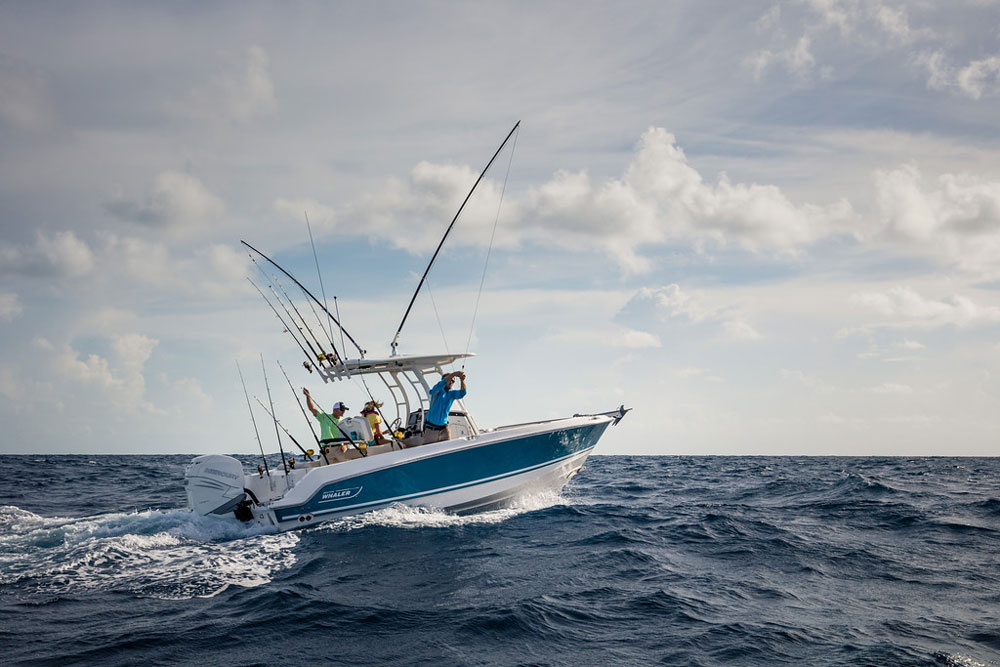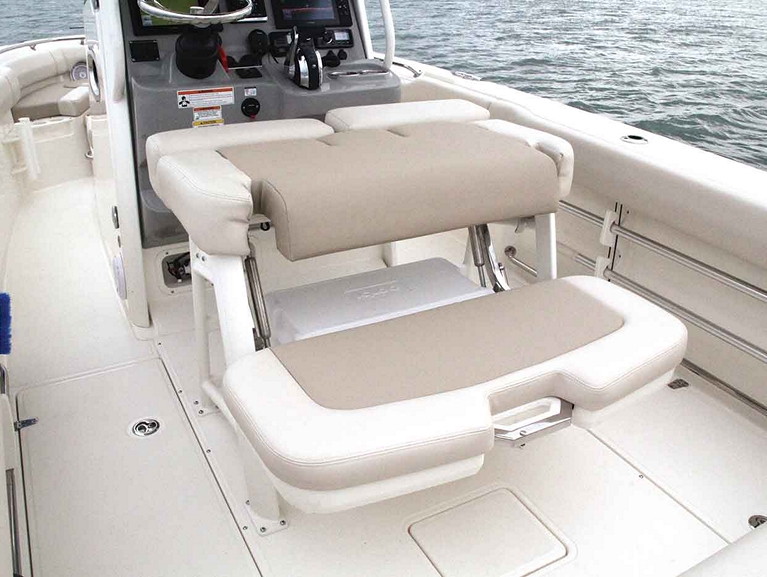Are you sick and tired of hearing the boating industry catch-phrase “smooth dry ride”? I know I am—if I read one more press release with the words “smooth dry ride” in it I might throw up. What’s worse is that quite regularly, those press releases are full of BS and the boat they describe is only smooth and dry when the wind is blowing at three knots. Not so, with the Boston Whaler Outrage 230.

I spent an entire day on an Outrage 230, which is the smallest model currently in the Outrage lineup, included running it through Indian River and out through Ponce de Leon Inlet into the open Atlantic. There were two to three foot seas, and I did firewall the throttles and do a few launches clear out of the water. (The proof is on video, at boats.com's YouTube channel). The strange thing is that even at WOT, leaping clear of the water and then crashing back down at 50-plus mph, I never caught any spray. And, more importantly, my back didn’t implode on the landings. That’s not to say this boat will never throw spray—there’s simply no such thing as a 23-foot boat that stays dry regardless of conditions—but on an average day in average seas, you can leave that foul weather gear at home.
The relatively soft landings can be attributed to two details: a 21-degree transom deadrise, and Whaler’s glass-foam-glass construction. Sure, it’s the unsinkable nature of this method of boat-building that usually gets the attention, but just as important is the fact that by pumping the foam in-between the hulls under pressure, not only is everything below deck level filled with foam, but when it cures the hull and deck essentially become one solid object. Vibrations and those drumming sounds that usually travel through voids and into your body are eliminated. And when the hull strikes a wave, you can feel the boat’s solid nature underfoot. (Boston Whaler's unsinkable nature is often why people choose their smaller models for their kids, too - read A Father and Son and their Boston Whaler, to see a nifty story of a father-and-son Whaler restoration). Added bonus: having all that foam instead of open voids provides some serious insulation for all the fishboxes. In this case, there are two in the deck plus a third box in the bow.
Fishing-wise, the 230 doesn’t really hold any major surprises. It has four gunwale-mount rodholders, a 16-gallon livewell, and four vertical rodracks forward. Those forward racks are plastic and one might feel better about them if they were stainless-steel or aluminum, but when I asked the Whaler rep about it, he said the same racks have been used on previous models without customer complaints nor premature failures.
Seating in this boat is a real highlight. The bow seats enjoy the same bump-out into the inwales as other Outrages, which expands the bow cockpit’s roominess. But the real kicker is the leaning post seat, which has a tricked-out flip-back seat that swings all the way aft and locks in place to turn into an aft-facing seat. It’s a comfy bait-watching spot, and is a big step up from a fixed backrest or a swing-back seat.

With 250 hp the Outrage 230 has plenty of pep, cruising in the low 30s at 4500 rpm. Lay the throttle down and you'll see a top end in the upper 40s. Or, go to max power and that cruise jumps into the upper 30s and top-end comes darn close to 60 mph.
Pricing for the 230 Outrage starts at right around $135K with 250 horses of Mercury Verado power. (going to a 300 adds about $3,800, and to a 400, $19,000).That's not exactly cheap but it's not overpriced in today's market, either. Besides, the bright side here is that Boston Whalers tend to hold their value far better than the average boat, so you won’t experience the usual sinks-like-a-rock devaluation when you buy this boat new. And considering that construction method, of course, nothing about a Whaler sinks like a rock—or sinks at all.
Quick Facts:
LOA – 23’0”
Beam – 8’6”
Displacement – 3800 lbs.
Draft (hull) – 1’6”
Transom deadrise – 21 degrees
Fuel Capacity –110 gal
Max HP – 400
Area Dealers – Taylor Marine Center, Milford, (302) 251-2506 and Ocean City, (443) 647-8265; Chesapeake Whalertowne, Annapolis, (410) 267-9731 and Grasonsville, (410) 827-8080.